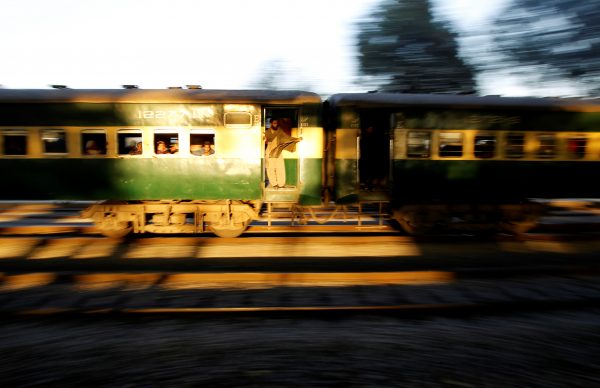This trans-Afghan corridor is the expansion of an agreement signed in late 2017 between Afghanistan and Uzbekistan on the construction of the Uzbekistan–Afghanistan railroad and electricity transmission lines. Uzbekistan’s Ministry of Investment and Foreign Trade (MIFT) estimates concluded that the project will take up to five years and require US$4.8 billion in funding.
But critics have argued that funding figures for the trans-Afghan corridor are misleading. The topography of Afghanistan is mountainous, so the railroad construction will require drilling tunnels through mountains and constructing bridges over gorges — the costs of which are hard to estimate. Another technical issue is the size of the railroad tracks. Uzbekistan uses a Russian standard gauge sized at 1520 millimetres, while Pakistan uses an Indian broad gauge sized at 1676 millimetres. The size gauge difference implies that on arrival to Peshawar, the cargo will need to be transported further by road transport because a train running on standard size gauge cannot proceed to broad gauge. To proceed the shipment from Peshawar, the cargo will either be relocated to a different train running on broad gauge or will be shipped via road transport.
Given the uncertainty of a return on their investment, Uzbekistan, Afghanistan and Pakistan filed an appeal for investment to international financial institutions, which received support from the United States, China and Russia. Representatives of the World Bank, the European Bank for Reconstruction and Development, the Asian Development Bank and the Asian Infrastructure Investment Bank also expressed their willingness to assist the project through technical consulting and financing. Such wide support for the project means that the source of investment is no longer a concern.
The project’s integration of Central and South Asia will generate unprecedented socio-economic gains for both regions. The strategic importance of the project lies in its potential for enhanced regional partnership and the inter-region integration to international value chains. The spillover effects of the project, particularly through its extensive construction process, will trigger higher economic activity across the two regions.
Having run a protectionist economy for roughly the last quarter-century, Uzbekistan has recently undergone structural change and is diversifying its trading partners. The nation’s macroeconomic indicators and growth dynamics show that the South Asian region is a priority for Uzbekistan. For the last decade, South Asia has experienced constant GDP growth at an average of 6.3 per cent. The region is also home to almost 25 per cent of the global population. So South Asia has the potential to become a significant partner for Uzbekistan.
Uzbekistan, like other landlocked countries, bears relatively high transportation costs. Goods from Uzbekistan are transported using the existing railway between Tashkent and Bandar Abbas in Iran, which costs around US$2800 for each standard 21.8-ton capacity container. According to estimates by Uzbekistan’s Institute of Strategic and Regional Studies, the new trans-Afghan corridor will provide the shortest possible route for seaport access and drive down current transportation costs by almost half, to around US$1500 per container.
Afghanistan holds a strategic trading position between the Middle East, South Asia and Central Asia. But in the face of political unrest, Afghanistan has partially lost its position as a country with high transit potential. Despite this, as reported by MIFT, trade via railroad through Afghanistan has been increasing by about 25 per cent annually for the last couple of years. In 2020 alone, the volume of rail freight through Afghanistan was 4 million tons. Estimates suggest that if implemented, the trans-Afghan railroad will increase annual volume of rail freight by 20 million tons.
With its significant economic prospects, the trans-Afghan economic corridor is a matter of heated discussion. Citing concerns around the topography and security of the trans-Afghan railroad, political analyst Bakhtiyor Ergashev suggested taking an alternative route to Chabahar, the port city in Iran. Such concerns stem largely from the constant security threat that the Taliban poses in Afghanistan.
But the trans-Afghan route goes through Mazar-e Sharif and Kabul — controlled by the Afghanistan government — where Taliban power is limited. The existing highway between Mazar-e Sharif and Kabul allows for a constant flow of raw materials to complete the railroad project within the given deadlines.
To achieve its economic objectives, access to the ports of Karachi and Gwadar is Uzbekistan’s highest priority. But while all participating governments recognise the benefits of the railroad corridor, its potential risks explain the slow pace of project implementation.
Salokhiddin Nasriddinov is an economics student and research assistant in the Institute for International Strategy at Tokyo International University.

